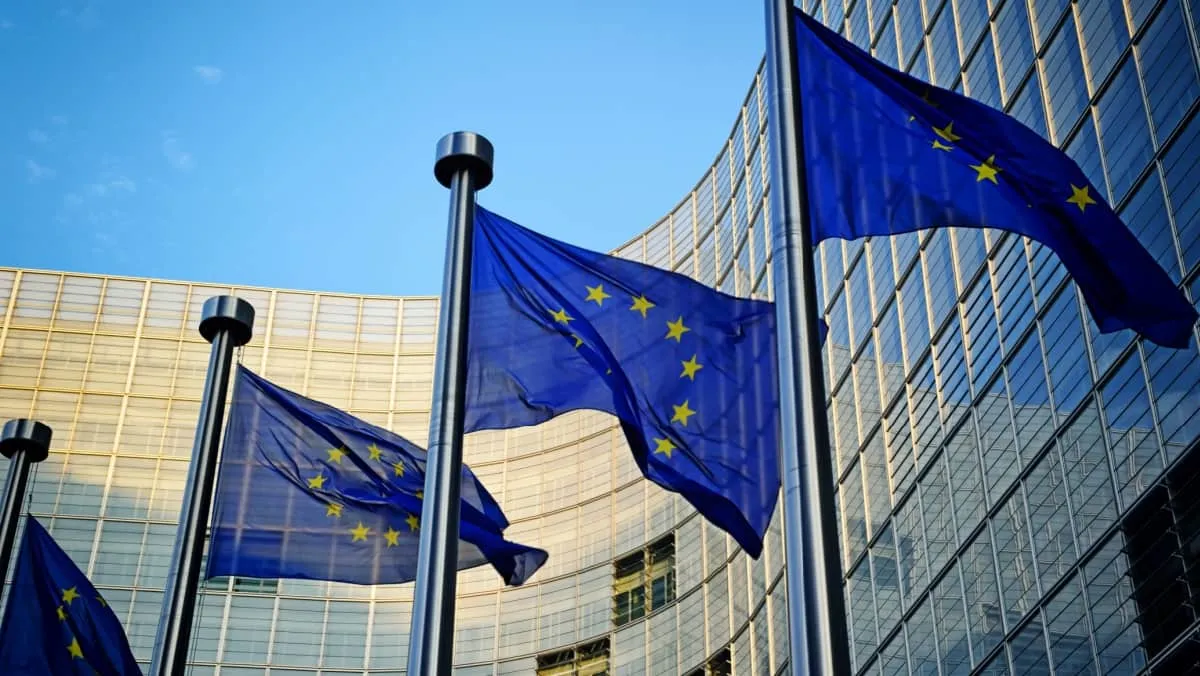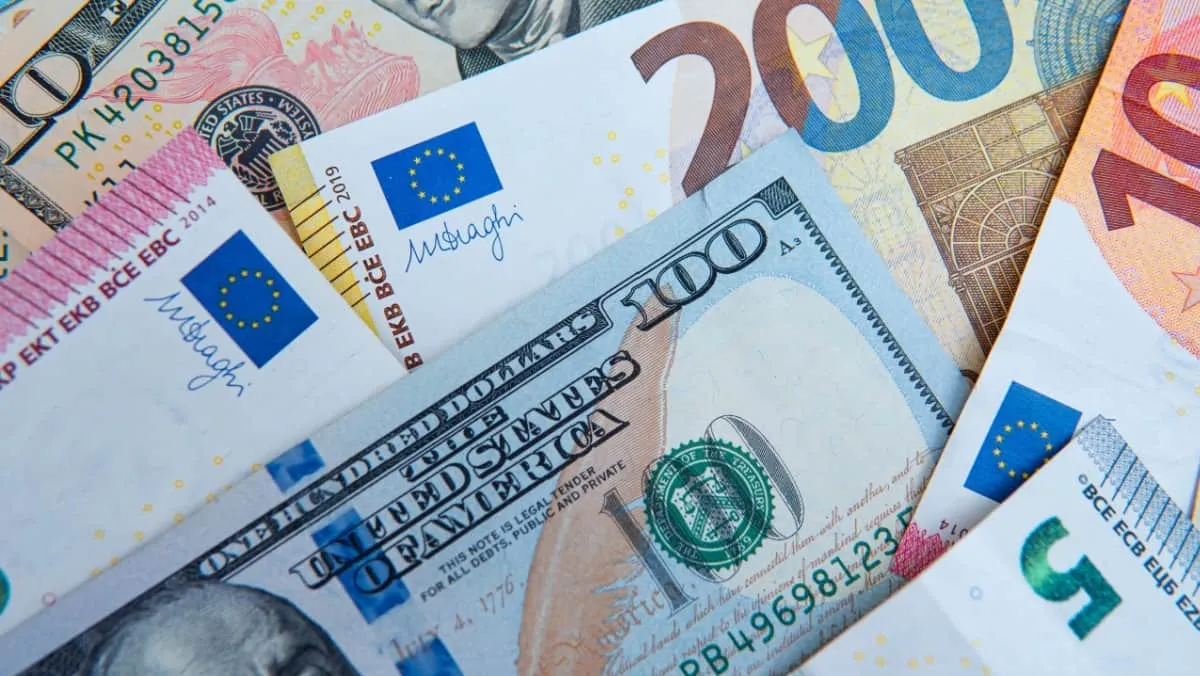Thursday Jun 6 2024 13:13

7 min

The European Central Bank (ECB) confirmed it would be going ahead with widely anticipated interest rate cuts at its meeting in Frankfurt on Thursday, despite ongoing inflationary pressures within the 20-nation euro zone.
The central bank's key deposit rate has been lowered to 3.75%, down from a record 4%, where it had remained since September 2023. The ECB also reduced its main refinancing rate to 4.25% and the marginal lending rate to 4.50%. The changes are to take effect from June 12, 2024.
An ECB press statement said:
″The Governing Council today decided to lower the three key ECB interest rates by 25 basis points. Based on an updated assessment of the inflation outlook, the dynamics of underlying inflation and the strength of monetary policy transmission, it is now appropriate to moderate the degree of monetary policy restriction after nine months of holding rates steady”.
Сalculate your hypothetical P/L (aggregated cost and charges) if you had opened a trade today.
Market

Instrument


Account Type
Direction
Quantity
Amount must be equal or higher than
Amount should be less than
Amount should be a multiple of the minimum lots increment
USD
EUR
GBP
CAD
AUD
CHF
ZAR
MXN
JPY
Value
Commission
Spread
Leverage
Conversion Fee
Required Margin
Overnight Swaps
Past performance is not a reliable indicator of future results.
All positions on instruments denominated in a currency that is different from your account currency, will be subject to a conversion fee at the position exit as well.
In updated macroeconomic projections, ECB staff have raised their annual average headline inflation outlook for 2024 to 2.5%, up from the previous 2.3%.
Similarly, the 2025 forecast has been increased to 2.2% from 2%. The projection for 2026 remains unchanged at 1.9%.
A follow-up cut at the ECB’s next meeting in July was unlikely, but has been all but ruled out by the latest figures, Dean Turner, chief eurozone economist at UBS Global Wealth Management, told CNBC:
“The slight upgrade to the inflation forecast was to be expected, inflation has been printing a little bit hotter than markets were expecting, but in terms of the timing of the next cut I’d still be looking to September”.
Markets had fully anticipated the 25 basis point reduction at the June meeting. This marks the first rate cut since September 2019, when the deposit facility rate was in negative territory.
The central question is now focused on the European Central Bank’s future policy direction. Despite the advance signaling of a rate cut, the rationale for the move was weakened by accelerating growth and the headline inflation rate remaining significantly above the ECB’s 2% target.
In May, the Eurozone inflation rate increased to 2.6%, up from 2.4% in April. Core inflation, which excludes volatile food and energy costs, along with services inflation, also accelerated during the month. Meanwhile, the unemployment rate fell to a record low in April, and the economy grew more than analysts had anticipated in the first quarter.
Here’s what Markets.com Chief Market Analyst Neil Wilson had to say in his preview of the European Central Bank decision:
“Eurozone inflation is pretty close to target and has come down a lot. The risks to growth remain balanced. Wage growth has not been as strong as they thought it would be. Cutting from 4% to 3.75% would still leave rates restrictive. A hawkish cut removing that top layer of restriction is on the cards.
I noted the divergence story morphing into one of reconvergence yesterday – the US/German 10-year spread has already narrowed a lot so this is starting to look priced but could have a little further to run if the ECB stays hawkish – currently just under three cuts priced this year (65bps). This could come into 2 (50bps) and push up EUR if the ECB declines to offer much in the way of guidance in terms of future cuts.
But with EU elections taking place, the upside for EUR may be capped in the near-term until there is some post-election unclenching — that is a big “if”, though, with the right expected to do very well and possibly even better than expected”.
While markets have fully priced in one more reduction this year, economists polled by Reuters last week forecast two additional cuts over the period.
Although the ECB began hiking interest rates later than other central banks, the June cut positions it ahead of the U.S. Federal Reserve, which is still grappling with high inflation. Lagarde emphasized in her last press conference that ECB officials are “data-dependent, not Fed-dependent.”
On Wednesday, Canada became the first G7 nation to cut interest rates in the current cycle. Sweden’s Riksbank and the Swiss National Bank also announced their own rate cuts this year, with the SNB being the first European bank to lower borrowing costs.

“Another concern for the ECB is that if it gets too far ahead of the Fed in lowering rates, it could weaken the euro against an already strong dollar. While that could boost European exports by making them cheaper to overseas buyers, there’s also a risk that it would add to inflation and could cause some financial instability,” Barron’s correspondent Brian Swint wrote after the ECB announcement.
The euro ticked up against the U.S. dollar after the European Central Bank’s press conference, trading around the $1.0880 area after briefly touching the $1.09 mark.
As of 12:40 GMT on June 6, it is 0.12% up against the greenback on the day. Year-to-date, however, the euro has slid against the dollar by 1.4%.
Francesco Pesole, an FX analyst at the Dutch lender ING, wrote that the announcement would be uneventful for forex markets, given the ECB “virtually pre-announced a 25bp rate cut”. The bank's euro forecast saw the EUR to USD pair trade up to 1.10 in this year's third and fourth quarters:
“The risks to the euro appear slightly tilted to the upside today, but we doubt this will be a huge event for FX. Unless President Lagarde revamps some of her eloquence (she has seemingly made press conferences intentionally uneventful), then the FX market may be left with more questions than answers.
The US story isn't only the naturally dominant one in EUR/USD but also the most dynamic at the moment, with still elevated uncertainty around the Fed's first cut. So, we suspect EUR/USD will rather quickly default to looking at US data and payrolls, above all. Our 1.10 call for EUR/USD for 3Q and 4Q currently embeds 75bp of easing by both the ECB (today's cut included) and the Fed in 2024”.
When considering shares, indices, forex (foreign exchange) and commodities for trading and price predictions, remember that trading CFDs involves a significant degree of risk and could result in capital loss.
Past performance is not indicative of any future results. This information is provided for informative purposes only and should not be construed to be investment advice.
Asset List
View Full ListLatest
View all
Monday, 31 March 2025

5 min

Monday, 31 March 2025

5 min

Monday, 31 March 2025

5 min


